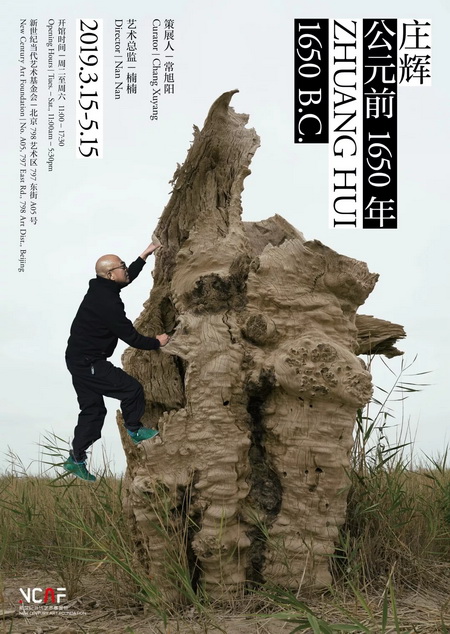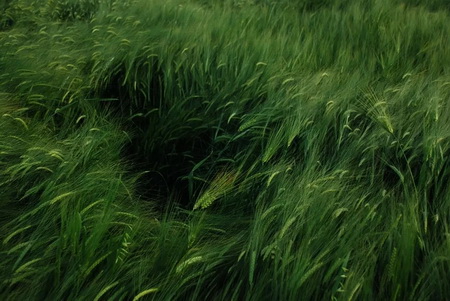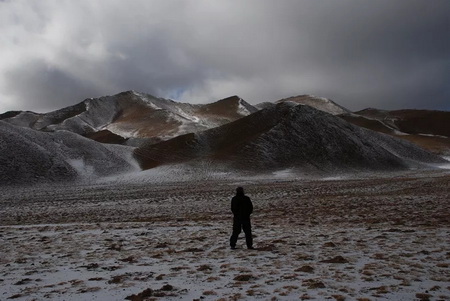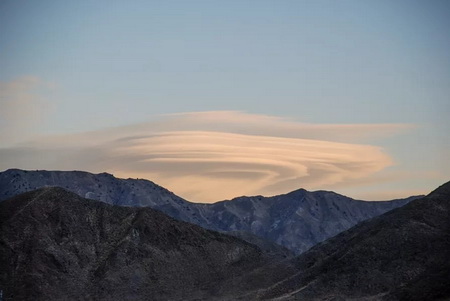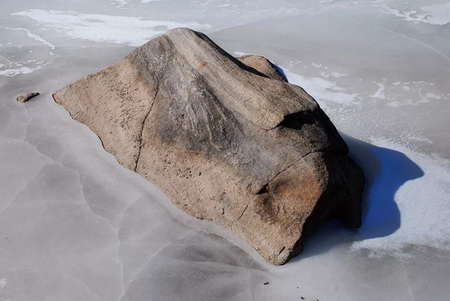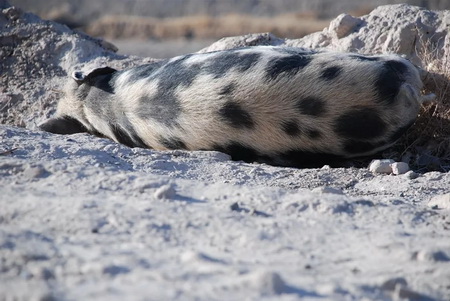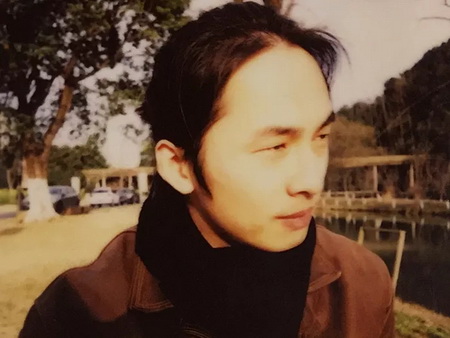
丁世伟(Ding Shiwei)
简历
丁世伟,1989年出生于中国黑龙江,毕业于中国美术学院跨媒体学院,获硕士学位,现工作生活于杭州。
关注点涉及个人与集体、时间与生命维度、元悖论等命题,使用诸如动画、影像、装置、绘画、摄影等媒介进行创作。“项目”是其阶段性的工作方法,通常以2年为创作周期。他已完成的项目有“元” (2017-2018)、“陨歌” (2015-2016)、“乌托邦” (2013-2014),每个项目均包含多件作品。
他曾于2015年在法国克莱蒙费朗的PRIX VIDEOFORMES获得组委会特别奖,并在2014年荣获华盛顿华语电影节银奖。他的个展包括:北京单行道画廊的“元”(2019)和北京现在画廊的“破晓”(2016),以及荷兰乌特勒支中心美术馆的荷兰国际动画节项目“陨歌”(2016)和上海Mao Space的“西风凛”(2015)。参加的群展:中国美术学院的青年艺术家邀请展“在场”(2018);法国昂西城堡博物馆的“China, Art in Motion”(2017);澳门艺术博物馆的“叙事曲-动漫美学当代艺术展”(2017);意大利都灵Castello Di Rivara当代美术馆的“Utopia & Beyond”(2016);巴黎和柏林的“Les Rencontres Internationales”(2015); 中央美术学院美术馆的“未来展”(2015)。他的短片作品也在众多国际电影节展出,曾入围法国昂西国际动画节(2017)、荷兰国际动画节(2016)、鹿特丹国际电影节(2015)、坦佩雷电影节(2014)等的国际竞赛和展映单元。
Born inHeilongjiang in 1989, DING Shiwei graduated from the School of Intermedia Art, China Academy of Art with a master’s degree. He currently lives and works inHangzhou, China.
Hefocuses on such topics as individuals and collectives, the dimension of timeand life, the meta-paradox, creating with the media of animation, video, installation,painting and photography. He works in the way of phased “projects”, whichusually last for two years. His completed projects include “What We Talk AboutWhen We Talk About Sea Horizon & Moon” (2017-2018), “Meteor Sonata”(2015-2016) and “Utopia” (2013-2014), each containing multiple works.
DING Shiwei won the silver medal at the D.C. Chinese Film Festival in 2014, and the PRIXVIDEOFORMES Special Award in 2015 in Clermont-Ferrand, France. His solo exhibitions include “What We Talk About When We Talk About Sea Horizon &Moon” (2019) at One Way Art Gallery, Beijing; “Daybreak” (2016) at Beijing ArtNow Gallery, Beijing; the project of “Meteor Sonata” (2016) in Holland International Animation Festival at Central Museum , Utrecht, the Netherlands; and “Disparate Illusion” (2015) at Mao Space, Shanghai. Group exhibitionsinclude “Presence” (2018) – the Invitational Exhibition of Young Artists ofChina Academy of Art, Hangzhou, China; “China, Art in Motion” (2017) at Musée-Chateau, Annecy, France; “Ballade – Animamix Contemporary Art” (2017) atMacao Museum of Art, Macao; “Utopia & Beyond” (2016) at Castello Di Rivara Center for Contemporary Art, Torino, Italy; “Les Rencontres Internationales”(2015), Paris and Berlin; “CAFAM Future Exhibition” at CAFA Art Museum,Beijing, China. His animated short films have been screened in multipleinternational film festivals, including Festival International du Filmd’Animation d’Annecy, France (2017), Holland International Animation FilmFestival (2016), International Film Festival Rotterdam (2015) and Tampere FilmFestival (2014), etc.
艺术家作品
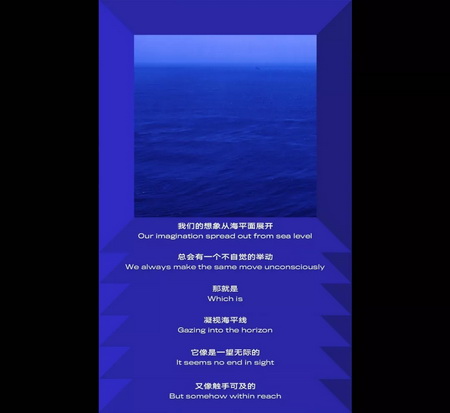

过去 没有先进的科技
人们愿意根据以往经验去揣测世界尽头的结构

海上生明月
天涯共此时

皓月当空
我们在千里之外共赏一轮月亮


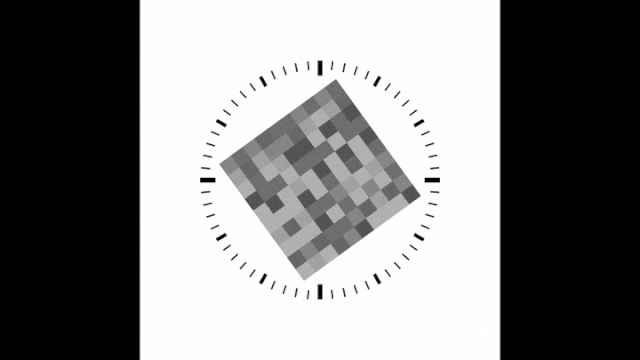
在凝视和观看的过程中
我们拥有至高无上的权力
我们的目之所及便是心之所向
▼
丁世伟个展《元》展览现场,单行道画廊
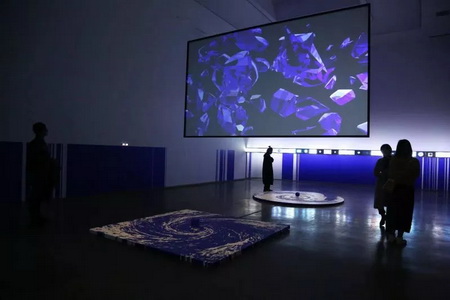

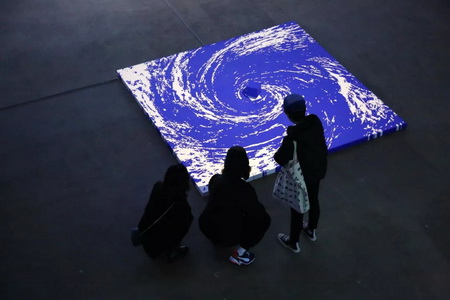



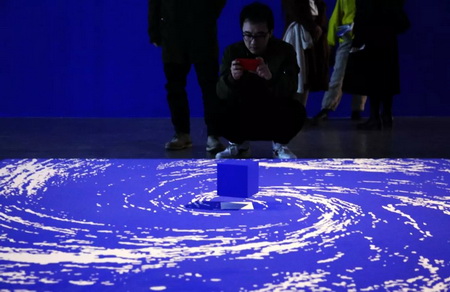


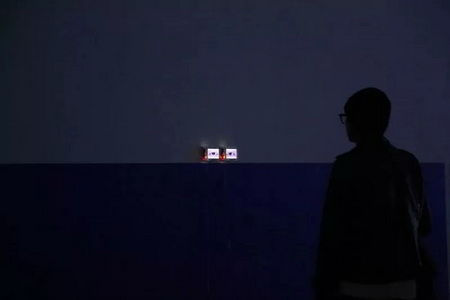



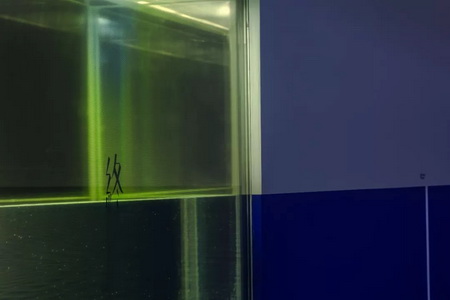
▲《终》
The Edge of The Earth

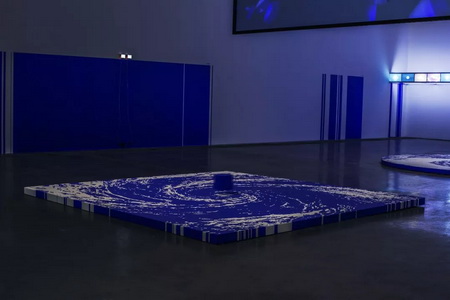
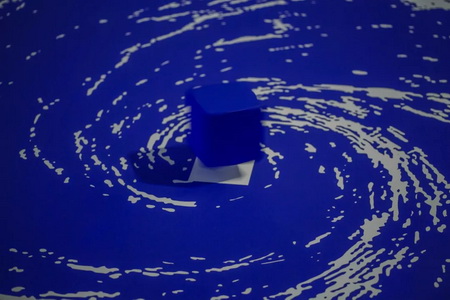

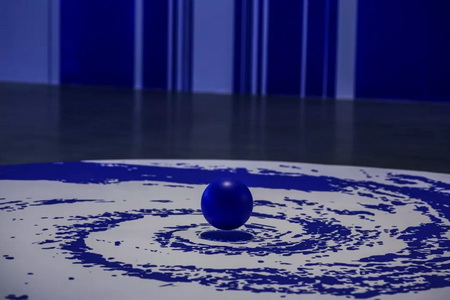

▲《浮》
Emerging knowledge
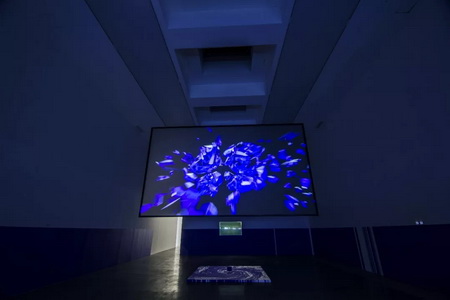



▲《悖》
Fragments of civilizations
视频︱悖 Fragments of Civilizations
悖 Fragments of Civilizations
2017/单屏影像装置/工程机投影/5 分 26 秒/
循环/彩色/16:9/无声
2017/Single Channel Video Installation/
Projection/5 Min 26 Sec/Loop/Color/16:9/Client




▲《衍》
Circle and Dandelions
衍 Circle and Dandelions
2017/28屏影像装置/17寸液晶屏/4 分 30 秒/
循环/彩色/16:9/无声
2017/28- Channel Video Installation/17 Inch LCD
/4 Min 30 Sec/Loop/Color/16:9/Client

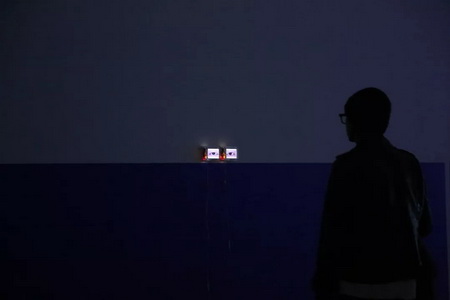
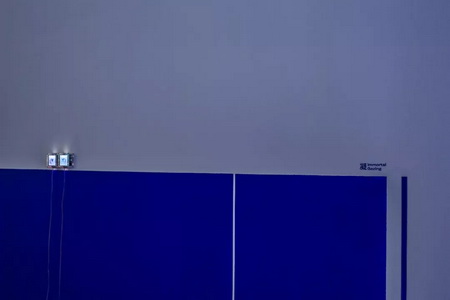
▲《凝》
Immortal Gazing

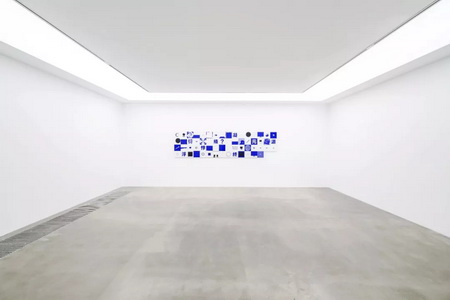

▲《络》
Relational Aesthetics

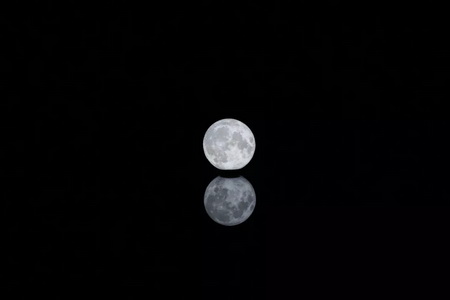

▲《源》
The oldest TV
李振华 & 丁世伟:为什么要做一个展览
Q: 李振华
A: 丁世伟
一
李振华:为什么要做一个展览?
丁世伟:此次展览“元”是一个为期两年的项目,从一个问题出发进而展开。这个问题即是“What we talk about when we talk about sea horizon & moon?”,也是展览的英文标题。我在展览中进行了假想式的自问自答,并抛出了更多问题,供观众思考和想象。
李振华:你感兴趣的问题是什么?如果你可以自洽,观众需要回应什么?你的预设和观众会有交集吗?海平面和月亮,如同仰望星空一样吧!
丁世伟:感兴趣的问题有太多啦,这个世界有太多奥秘。比如:
“当我们凝视海平线和月亮时,我们在凝视什么?”
“为什么我们视‘方’与‘圆’为最完美的形体?”
“当现代的建筑和工业的痕迹从我们视野中逐渐消失,当车窗外的一片原始森林或是草原、或是地平线逐渐远去,我们所见到的这一切是否与农耕时代甚至是史前人类看到的风景是相似的?”
“最早的东非智人制作一个简陋的木筏,驶向无际的海平线,他这么做的动机是什么?”
“当第一位智人Lucy经历了白天的狩猎,夜晚休憩时望向夜空中的圆月,他在想什么?”
“如果月亮是一个不规则的多边形(多面体),那这个形体是否能成为现代社会认知中的完美形体?”
“库布里克的《2001太空漫游》中的黑方块与马列维奇的黑方块有何关系?是否都指向人类从自然中所提取的‘知识’?‘知识’更多的是已知还是未知?”
观众其实在现实生活中时刻在回应展览中的问题。比如,当我们来到海边,会有不自觉凝视海平线的举动。当“血月”和“超级月亮”发生时,大家共同用月亮的图像在刷着朋友圈。我们用的杯子,拥有着完美的圆形弧线。使用一个三维软件,会发现直线、方、圆,是建构虚拟世界的基础图形。
李振华:这些会被图像解决吗?图像之下往往是不同的心理活动,你的图像之外,这些心理活动如何表述?
丁世伟:这也是此次展览中的难点。我发现图像在叙事过程中发散的属性,是一把双刃剑。观众在图像其中得到的是一个与自己个人经验相关的信息,而此信息或心理活动与我的展览叙事也许有重叠的部分,也许毫不相干。所以,展览中作品的中英文标题起到了一定的提示作用。我用一个中文汉字与一组英文结合,作为一个标题组,作为图像的补充和提示,有一定的引导作用。让观众尽可能在感受自己的心理活动同时,也对我的展览叙事有或深或浅的认识。
李振华:这是共感,或是意识覆盖?
丁世伟:“我”在展览和观众之间的角色很微妙,我既希望观众拥有对我已设置的叙事进行阅读的能力,又希望他们有更强的自我理解和发散的部分。所以在作品《络》Relational Aesthetics中,我假想整个展厅是一个整体,墙上的作品仅仅是我的叙事线索,也是您所说的“共感”。而作品之外展厅四周空出的白墙我希望代表着观众在“共感”之外的想象。
二
李振华:你的展览中作品,时间跨度2017-2019,如何联系起来这些作品的时间和材质关系?
丁世伟:我一直在考虑以“项目”作为创作方法的方法。其中重要的一点则是,围绕着其核心在反复兜转。在思维、叙事的反复建构和解构中,作品的“身体”、媒介、状态也在逐步形成。时间令我想明白很多问题,同时提出更多问题。夜晚的失眠与作品间的粘连始终相伴。
这次运用了诸如透明屏幕、磁悬浮及无线充电、编程树莓派、UV打印等媒介,但我不希望在展览中观众过分关注媒介,作品的媒介和材质辅助我更好的完成展览叙事,并希望在观念表达上更为准确。
李振华:媒介即讯息,媒介除了传播的直接特性,也有日常生活的亲近或奇异感,感知的界面也由媒介打开。
丁世伟:是,此次也有朋友,给予我展览中关于媒介的诸多看法。例如方体与球体的悬置感。此种力与力的博弈与平衡,让他引申出库布里克的黑石碑与我作品中悬浮的方与球(《浮》 Emerging Knowledge )的共鸣点。“知识”与“悬浮”在某种层面上有种通感关系,即都是稳定的,但也是脆弱的。
在作品《终》The Edge of the Earth中,通过有进深的、带有水箱的透明屏幕,真实的水面和虚拟的影像相互交叠,给观众以奇异感和幻觉感。有很多观众驻足了满满8分多钟时间,感受着时间的流逝和浪漫的风景。这与我们在海边不自觉的望向海平线的行为是不谋而合的。
李振华:图像和媒介,艺术之依存。
丁世伟:是的。图像作为象征性的情感空间,替代了身体经验的记忆。同时也是以造型为主导的符号学。而媒介即信息,它控制着图像的抽象化或风格化的程度。两者相辅相成。
三
李振华:你的整个展览可以被看作一个综合作品,你如何看单体作品和综合在一起的整体,在表述上的差异。
丁世伟:这是我最新的一次尝试,也与空间的使用相关。“项目”作为工作方法,我一直在考虑把所有作品归类成一个“项目”的意义。所以,在此项目中,我使用了每个单件作品不完整叙事的方式,利用空间的结构,让每件作品从空间、媒介、意义上都有相互对应。整个展厅呈对称式的中轴线结构,每件作品的大小、形式、投影的方向、物理的位置皆在呼应着整体叙事。这也给观众一个不一样的观看体验,观众也需要打破自己看展的常规经验,他需要看完整体后体会。面对单一作品会有些茫然失措。
而通常情况下,制作和表述单件作品,可以视它为独立整体,它就是100%的。而我的展览中,每个单件作品,也许是80%的叙述。
李振华:如果一个观众太专注于一个作品,是否会影响你的整体感。或者说这个单件作品也是整体的显现。
丁世伟:当然,作为观众,他对某一作品感兴趣,而非关注整体,这对于艺术家来说,这种情况是不可控的,也是会给观众这种自由的。我也很欣慰80%的作品叙述也会给观众带来兴趣,甚至观众自身创造了另外20%的可能。我不认为这会影响整体感,我希望观众每个人都有一个整体感的标准。像这次对于作品名称的使用,也是作品的重要部分。可能由于在墙体的面积较小,观众会对其忽略。观众对图像的阅读中有独特的见解,虽然有可能会偏离我的叙事,但会让作品更有想象空间,这也是艺术的魅力。
四
李振华:什么才是当代的?
丁世伟:我认为在当代艺术的语境中,“当代”代表着我们今天的文化处境、时代特征,代表着我们面对的现实,是以人类共同守望的普世价值作为基础的。并且,“当代”是与时代齐头并进的,艺术的再定义,成为某种“成功”当代艺术的标准。
李振华:当代的很快成为过去,就在一秒钟之前。
丁世伟:我们由无数个瞬间构成。
李振华:连贯的,或跳跃的。
丁世伟:也是靠近的,或伴随的。
内容来源:微信访谈
访谈时间:2019年4月24日 16时 - 4月27日 10时
【声明】以上内容只代表原作者个人观点,不代表artda.cn艺术档案网的立场和价值判断。

